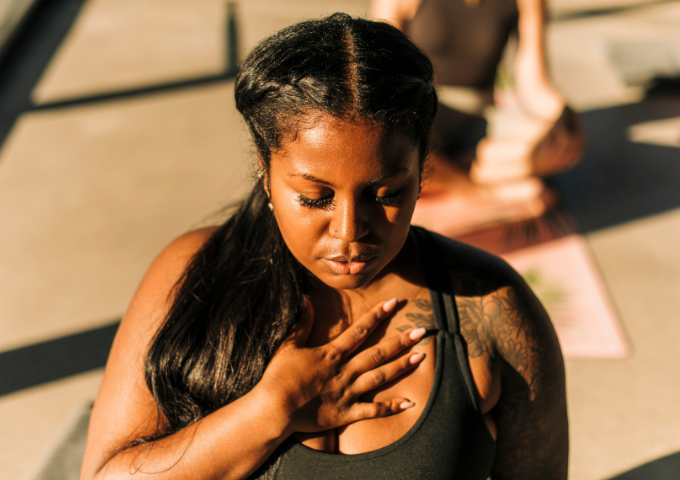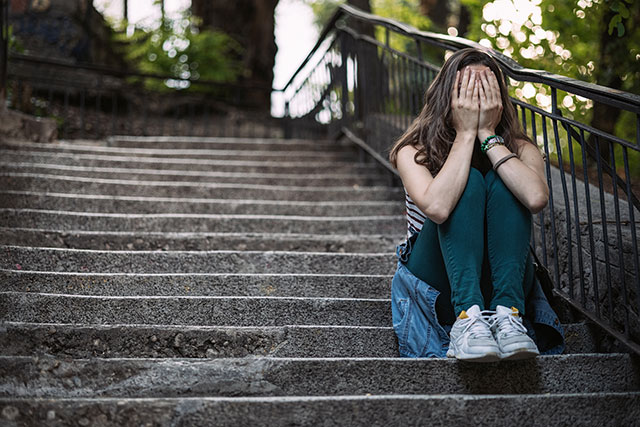The benefits of exercise for mental health
People who exercise regularly often say it makes them feel good, in addition to the physical health benefits they get. Research backs up this sentiment, as your mental health and physical health are closely connected.1 Below are some of the benefits of exercise for mental health:
- Regular exercise can help to reduce the physiological and emotional responses to stressors.2
- Exercise improves mental health by reducing anxiety, depression, and negative mood and by improving self-esteem and cognitive function.3
- Regular exercise may increase serotonin in your brain (which helps to regulate mood and sleep) and can also increase endorphins (which have mood-lifting properties).4
- Moving your body decreases muscle tension, lowering the body’s contribution to feeling anxious.5
- Health benefits from regular exercise can include improved sleep, better endurance, stress relief, improved mood, and reduced tiredness.6
Making exercise work for you
The relationship between exercise and your mental health is a two-way street: being inactive can worsen your mental health, while poor mental health can make it harder to get moving.
People with a mental illness may find it harder to find the motivation and energy to exercise. Here are some practical ways to overcome potential barriers to exercising.
When motivation feels low:
- Start with just 5-10 minutes of movement and build gradually.
- Set small, achievable goals and celebrate your progress.
- Remind yourself that even light activity can improve your mood.
- Consider exercising with others for support.
When time feels limited:
- Break an activity into smaller chunks throughout the day (e.g. three 10-minute walks instead of one 30-minute walk)
- Incorporate movement into your existing routines, such as taking the stairs instead of the escalator.
- Combine a walk with phone calls you need to make.
- Wake up 15 minutes earlier to do a light exercise.
When cost is a concern:
- Explore free activities like walking, running, or using public outdoor gym equipment.
- Check community centres and local councils for free or low-cost classes.
- Use free online workout videos or mobile apps.
- Consider bodyweight exercises that require no equipment.
When physical limitations are a factor:
- Consult your GP or physiotherapist for personalised advice.
- Check out low-impact options like swimming, chair exercises, or gentle stretching.
- Start slowly and listen to your body.
Exercise and mental health: Six ideas to get you moving
Exercise doesn’t have to involve strenuous activity – any movement is better than none. Here are six ideas to help you increase your daily physical activity and exercise.
1. Get out and about
If you live near a park, beach or public garden, head out to see what’s available. Many parks and public areas have walking tracks and training equipment, and some even host local exercise groups. Next time you get the chance, head outside and take a stroll, even if it is a short walk around the block.
2. Follow online fitness content
If you enjoy using social media or apps, there are free workout routines available on platforms like YouTube, Instagram, and fitness apps. From yoga to high-intensity workouts, you can find something that suits your fitness level and interests. Remember to go at your own pace. You’re better off starting slowly and building up gradually, rather than overdoing it the first time around.
3. Build strength at home
Building your strength doesn’t require a gym membership. Use household objects, such as full water bottles, books or anything else you can safely and comfortably lift as weights. You can also do bodyweight exercises like push-ups, planks, and squats without any equipment. Search online for beginner-friendly exercises and modifications that work for your fitness level.
4. Leave the car at home
When it makes sense, consider walking or riding your bike instead of taking the car. Or take the car but park in a spot that’s further away from the entrance to walk a few extra steps. If you take public transport, get off at an earlier stop to squeeze in a little exercise.
5. Track your movement
Most smartphones and smartwatches now have built-in step counters and activity tracking features. Use these to see how much you’re currently moving on a typical day, then set small, achievable goals to gradually increase your activity.
6. Make housework part of your routine
Vacuuming the house, cleaning the windows and floors, washing the car, mowing the lawn, and weeding the garden are all ways to get moving. You can focus on the different muscle groups as you work your way around the house. Add your favourite music in the background to make it more enjoyable.
How much exercise is recommended?
The Australian Department of Health recommends that healthy adults aged 18 to 64 years do either:
- 2.5 to 5 hours of moderate intensity physical activity each week. E.g. brisk walk, golf, swimming, or mowing the lawn.
- 1.25 to 2.5 hours of vigorous intensity physical activity each week. E.g. jogging, aerobics, soccer, or netball.
- An equivalent combination of moderate and vigorous activity.
- Muscle-strengthening activities should be part of your daily physical activity on at least 2 days each week. E.g. push-ups, lifting weights, squats, or household tasks that involve lifting, carrying, or digging.
For older Australians aged 65 years and over, the Department of Health recommends at least 30 minutes of moderate intensity physical activity on most, preferably all, days. If that’s too difficult, start with 10 minutes once or twice a day.
Generally, when you’re thinking about your exercise and mental health, you can start off small with short amounts of exercise each week and build it up over time. It doesn’t have to be extremely vigorous. Any physical activity is better than none, so begin with what you’re comfortable doing.
Doing regular exercise can improve your physical and mental health, energy, quality of life, and reduce the risk of many health conditions.
Whatever you decide to do, go at your own pace and listen to your body. And if you haven’t exercised for quite a while and have health concerns, you should talk with your GP first.
If you or someone you know needs support, SuicideLine Victoria has professional counsellors available 24/7. Call us on 1300 651 251 or click the chat button on the right to access online counselling. Our service is free.
If it is an emergency, call 000.
References
1 Julius Ohrnberger, Eleonora Fichera, Matt Sutton, The relationship between physical and mental health: A mediation analysis, Social Science & Medicine, Volume 195, 2017 https://www.sciencedirect.com/science/article/pii/S0277953617306639
2 Harvard University, The Science of Stress: Stress Management Strategies https://sdlab.fas.harvard.edu/physical-activity
3 Sharma, A., Madaan, V., & Petty, F. D. (2006). Exercise for mental health. Primary care companion to the Journal of clinical psychiatry, 8(2), 106. https://doi.org/10.4088/pcc.v08n0208a
4 Black Dog Institute, Depression and Exercise https://www.blackdoginstitute.org.au/resources-support/depression/treatment/#:~:text=Regular%20exercise%20may,mood%2Dlifting%E2%80%99%20properties.
5 Harvard Medical School https://www.health.harvard.edu/blog/can-exercise-help-treat-anxiety-2019102418096
6 Sharma, A., Madaan, V., & Petty, F. D. (2006). Exercise for mental health. Primary care companion to the Journal of clinical psychiatry, 8(2), 106. https://doi.org/10.4088/pcc.v08n0208a









